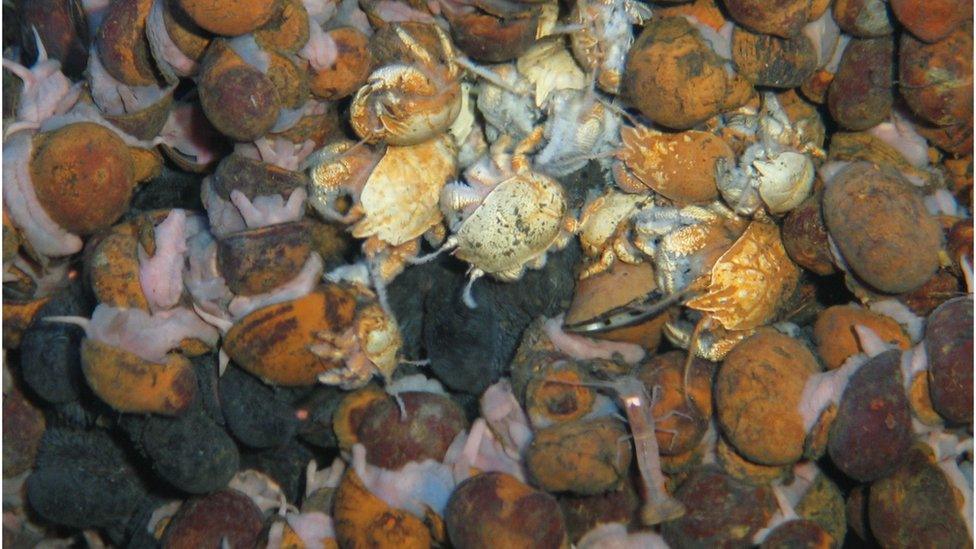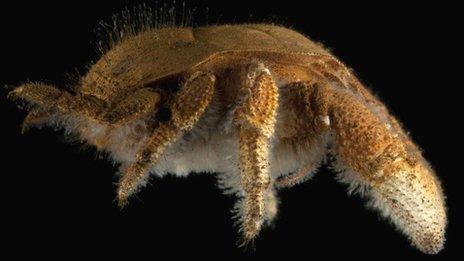New marine life found in deep sea vents
- Published

Teeming with life: the new species include the light brown crab in the middle of the photo
Six new animal species have been identified at deep-sea vents beneath the Indian Ocean.
The remote area is home to life not seen elsewhere in the world's oceans, yet has been earmarked for future mineral exploration.
Hydrothermal vents form at locations where seawater meets magma. They are surrounded by a large number of organisms that are new to science.
The latest finds include worms, snails and a crab.
UK researchers explored an area of the Southwest Indian Ridge, which bisects the ocean between Africa and Antarctica, in 2011.
Scientists at Southampton University revealed they had found many new creatures using a remote-operated underwater robot.
Species spotted at deep-sea vent
They have now analysed samples from the site, known as Longqi, or "Dragon's Breath", and compared them with known species based on the animals' genetic make-up.
The study, external, published in the journal Scientific Reports, shows six animals new to science.

The six new species
a "Hoff" crab
a "giant peltospirid" snail
a whelk-like snail
a limpet
a scaleworm
a polychaete worm

Hydrothermal vents were first discovered in 1977. Since then, more than 400 new animal species have been discovered living around them across the world's oceans.
"Hydrothermal vents form a network of marine life in the deep, and so far we've only glimpsed one node of the network in the south-west Indian Ocean," said Dr Jon Copley, who led the research.
"Our results show that we need to explore this network much further, if we're going to understand the possible impacts of any future mining at hydrothermal vents in this region."

A vent chimney known as "Jabberwocky"
Mining on the seabed is expected to be a growth area in the future.
Contracts for seabed mining exploration and eventual mining in the high seas are granted to individual countries by the International Seabed Authority, an organisation created by the United Nations.
Over one million sq km of ocean floor (400,000 sq miles) in the high seas of the Pacific, Atlantic and Indian Oceans has been earmarked for exploration by at least 16 countries.
A Chinese research vessel has been surveying the hydrothermal vents in the Southwest Indian Ridge for mineral deposits this year.
Follow Helen on Twitter, external.
- Published28 December 2011
